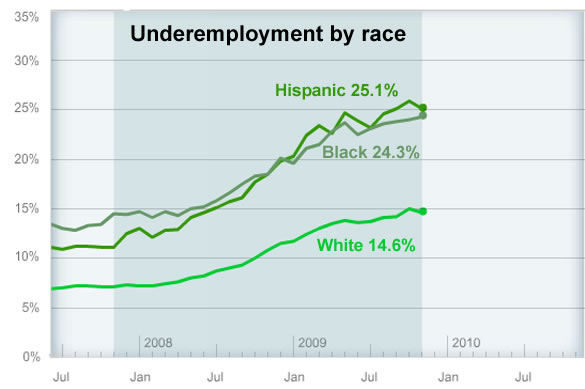The nation’s 10% unemployment rate does not fully capture the extent of the jobs crisis, since millions of Americans have given up looking for work or cannot find the amount of work they need. This large group of discouraged and “involuntary part-time” workers is more accurately counted in the underemployment rate, which stood at 17.3% in December, and is much higher for black and Hispanic workers.
This image from EPI’s Economy Track shows the huge disparity in underemployment by race. While white underemployment has more than doubled over the course of the recession to 14.6%, underemployment is now 24.3% for black workers and 25.1% for Hispanic workers: A staggering one in four of these minority workers cannot find the amount of work they want.

Underemployment counts three groups of workers: The unemployed; involuntary part-time workers who want full-time work but have had to settle for part-time hours; and workers described as “marginally attached,” who want to work and are available to work but have given up actively looking. The ranks of the marginally attached typically increase during economic downturns as slim job prospects lead more of the unemployed to give up looking.
The underemployment rate is an important indicator of the health of the job market and the overall economy that is not fully reflected in the official unemployment number. When large numbers of workers are underemployed, it means employers may gradually increase their hours before they bring on additional full-time hires. And since workers who are underemployed have little if any discretionary income, high underemployment can limit the spending needed for a robust economic recovery.
Visit EPI’s Economy Track for more information about the job market.
